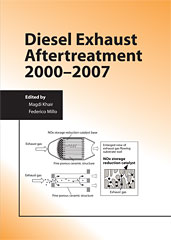Technical Paper
A Fully Physical Correlation for Low Pressure EGR Control Linearization
2017-09-04
2017-24-0011
Nowadays stringent emission regulations are pushing towards new air management strategies like LP-EGR and HP/LP mix both for passenger car and heavy duty applications, increasing the engine control complexity. Within a project in collaboration between Kohler Engines EMEA, Politecnico di Torino, Ricardo and Denso to exploit the potential of EGR-Only technologies, a 3.4 liters KDI 3404 was equipped with a two stage turbocharging system, an extremely high pressure FIS and a low pressure EGR system. The LP-EGR system works in a closed loop control with an intake oxygen sensor actuating two valves: an EGR valve placed downstream of the EGR cooler that regulates the flow area of the bypass between the exhaust line and the intake line, and an exhaust flap to generate enough backpressure to recirculate the needed EGR rate to cut the NOx emission without a specific aftertreatment device.


